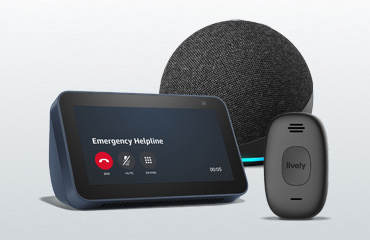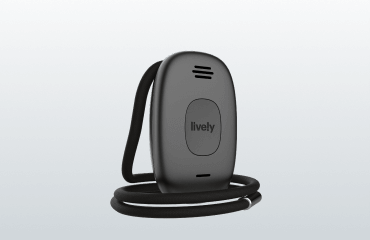Among people over 65 years of age, falls are the primary cause of serious injuries and accidental death—everything from broken bones to traumatic brain injury. Statistically, if you’ve fallen once, your chances of falling again rise by a factor of two.
And even when falls do not cause injury, they tend to create a self-defeating downward spiral: People who have fallen fear falling again and tend to reduce their daily activities. Decreased activity causes further deterioration in lower-body strength, agility, and reflexes; loss of conditioning then increases the risk of falling again.
It’s a vicious cycle.
If you’ve fallen once, your chances of falling again rise by a factor of two.
Causes of falls in the elderly are numerous and, in many cases, complex; the United States Centers for Disease Control and Prevention attributes most falls to a combination of risk factors. Risk factors may be personal or related to the environment; the more risk factors an older person is experiencing at any given time, the greater the chances of falling.
Understanding what causes falls in the elderly is the first step toward reducing falls and injuries. Some fall causes are preventable; others may be reduced or mitigated with the assistance of health care professionals and by reducing environmental risk factors.
Sensory deficits
As we age, our vision, hearing, sense of balance, and even tactile sense (touch) lose acuity and refinement. And we need keen senses to keep us on our feet. Unseen trip hazards can cause falls; so can unheard moving obstacles (like pets). Inner ear problems become more common as we age, affecting the ability to maintain balance and stability and to regain it quickly once we stumble or wobble.
Older adults who have not had a full vision, hearing, and balance assessment should speak with their physician about the most common causes of falls in the elderly and whether the may be able to improve their risk profile. Improving the home may also help to prevent sensory-related falls. Installing more light in more places, reducing background noise, and removing extraneous clutter and obstacles can help older eyes, ears, and feet navigate home safely.
Health conditions
Many of the diseases and conditions we typically associate with aging can cause symptoms that directly or indirectly contribute to falls. From the gradual onset of physical limitations to changes in mental status, many of these risk factors are directly tied to the propensity to fall.
People who are under a physician’s care for diabetes, heart disease, neurological conditions, and many other chronic diseases are at a higher risk for falls. At the time of any new diagnosis, discuss fall risks and a collaborative treatment plan that include strategies to safely maintain as much strength and independent activity as possible through an appropriate exercise program. Many older adults take Tai Chi classes specifically because it emphasizes lower body strength, stability, and balance—all critical for
.
Causes of falls in the elderly may also include dizziness, lightheadedness, and fainting. These may be triggered by many different underlying syndromes: inner ear issues, dehydration, vertigo, even postural hypotension (a drop in blood pressure that occurs when standing from a sitting or lying position). A doctor can undertake a medication review to identify potential medication-related sources of dizziness and lightheadedness; he or she may recommend pressure stockings in some case, or even medications to slightly raise blood pressure if faintness is an ongoing concern.
Physical factors
As we age, the wear and tear of decades begins to accumulate in our bodies. If we haven’t been intentional about maintaining our lower-body strength, flexibility, and balance, we can begin to lose these. Painful limitations that affect the gait (stride length, velocity, and balance) can arise from many physical sources: degeneration, inflammation, swelling, and instability in joints, bones, muscles, ligaments, tendons, or nerves are common sources. Arthritis and foot problems (callouses, bunions, overgrown or thick toenails, or other podiatric issues) are others. Every disorder that can cause pain in the hips, knees, feet, ankles, back, neck, arms, and feet can reduce mobility, limit activity, and contribute to falls.
Pain in the hips, knees, feet, ankles, back, neck, arms, and feet can reduce mobility, limit activity, and contribute to falls.
For people who struggle with physical sources of discomfort when walking, a physician partner is critical to help manage risk factors. In many of these cases, surgery or pain management strategies may be required to help mitigate the most common causes of falls in the elderly through conditioning and regular lower-body, weight-bearing exercise.
Medications
While living in the era of advanced pharmacological science is a blessing in nearly every way for older adults, it is ironic that prescription drugs themselves—especially when more than three are taken regularly—are sometimes what causes falls in the elderly. A 2013 drug review identified the classes of pharmaceuticals most likely to increase fall risks:
Sedatives and hypnotics
Neuroleptics and antipsychotics
Antidepressants
Benzodiazepines
Alcohol consumption also increases fall risk, especially in combination with the risky drug classes.
Environmental factors
Dim lights; cords on the floor or in walking pathways; ill-fitting shoes; shrub branches extending into the walkway outdoors; uneven pavement; low chairs that are difficult to sit in or rise from; slippery bathtubs; a lack of grab bars and handrails throughout the home.
The most common causes of falls in the elderly are frequently things we rarely take the time to think about because they are simply a part of “home.” But home is where most falls occur, and managing the causes of falls in the elderly begins with creating a safe environment.
A comprehensive fall safety plan starts with removing unnecessary risks and also include proactive measures for those at risk, including a Personal Emergency Response System with fall detection capabilities and a commitment to wearing it at all times. The Centers for Disease Control provides a comprehensive home fall safety checklist that can serve as a guideline for families, caregivers, and older adults who want to take control of their surroundings to make them as safe as possible for many more years of active, healthy, independent living.
Here’s more from Lively.
swipe for more
scroll or use your arrow keys for more
scroll for more
use your arrow keys for more



